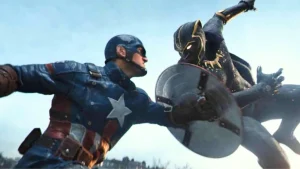Released 13 years ago today, Halo 4 proved that the series was still a behemoth in the gaming space — but the campaign mode and gameplay tweaks set in motion the kind of choices that would hinder the series for years to come. It wasn’t necessarily ever a question of whether there would be a Halo 4, so much as when there would be a Halo 4. The long-awaited direct follow-up to 2007’s Halo 3, Halo 4 took the series in a wild and more overtly sci-fi direction.
Largely removed from the human/Covenant war that had defined the original trilogy (as well as the spin-off games and tie-in novels), Halo 4 brought the action to a distant setting and introduced plenty of new villains, weapons, and lore revelations. From a gameplay perspective, much of Halo 4‘s action is as tight as ever. It’s one of the biggest reasons the game did so well financially, especially when one takes the multiplayer into consideration. However, the plot problems and gameplay tweaks with Halo 4 still bother me over a decade since I first encountered them and eventually played into the struggles other games in the series struggled with.
Halo 4 was a massive success for Microsoft, but the title also laid the groundwork for many of the struggles that it would increasingly face as a franchise. After launching with the original Xbox, Halo: Combat Evolved became a paradigm shifter in the gaming space. The original trilogy’s tight design, compelling worldbuilding, and visual strengths made it a genuine blockbuster smash for the Xbox. Notably, the trilogy ended on an open-ended but fulfilling note, and the franchise proved capable of moving beyond Master Chief’s orbit with successful spin-off titles like Halo Wars and Halo: Reach.
However, when Bungie splintered off from Microsoft, the latter decided to revive the series, with 343 Industries taking the helm. Halo 4 is undeniably ambitious, with a larger story that explores the deeper lore of the universe. It also shifts focus away from the threat of the Covenant and towards the machinations of Forerunners, establishing secrets about the franchise history. It introduced new tweaks to the gameplay, like Armor Upgrades and a greater emphasis on movement. It was also a more emotionally-driven plot, with Master Chief forced to reckon with the discovery that Cortana is suffering from mental degradation.
The game was a veritable smash with gamers, breaking several records for the franchise and continuing its place as the top-tier franchise of the Xbox brand. The multiplayer modes in particular were a quick hit, highlighting the continued strength of the franchise with gamers who had spent years honing their skills in settings like Blood Gulch. However, other elements of the game were met with a more mixed reception and hinted at some of the problems that would become more pronounced over time for the studio.
Despite being the main character of the trilogy, Master Chief was purposefully designed as a cipher for the audience to embody during the War with the Covenant. His arc was less important than his dedication to the conflict, with other characters like the Arbiter and Johnson getting more concrete storylines. It helped lend the series a true action movie vibe, all while giving players the chance to live out a power fantasy in the setting.
By contrast, Halo 4 spends more time dealing with Master Chief’s state of mind and emotional state after Cortana was ret-conned into a more personable (and physically appealing) figure. The gradual loss of his only companion was meant to pull at the heartstrings. However, the game’s blunt approach to both elements wasn’t as clean as the character throughlines of the rest of the series and felt like a tonal whiplash following her roles in previous games. Master Chief isn’t all that compelling of a central character himself, and trying to retroactively make him into one was a doomed prospect from the start.
On top of that, the conflict with the Forerunners, rooted in unnecessarily complex lore, made for a far more confusing central antagonist than the straightforward but compelling splinter factions in the Covenant. All of these issues were distracting in Halo 4. What makes it worse is that, as the beginning of a larger overarching narrative, these threads were expanded upon in future titles to the point where they started to throw off the cohesion of the overall execution.
What makes Halo 4‘s story so odd, especially in retrospect, is the way it moves the series into a more grandiose style of sci-fi that isn’t nearly as compelling as the first trilogy. The Forerunners overcomplicate the lore, and the Cortana story becomes overly sentimental (and ends up becoming even weirder when she’s brought back as an antagonist in the follow-up games). The repeat of a confrontation on a Halo Ring felt repetitive after the previous trilogy. It all felt like an effort to take what worked before and just make it bigger.
Notably, Halo didn’t need to shift in this direction to survive and thrive. Games like Halo: Reach highlighted how compelling stories could be told in the franchise without becoming too involved and over the top. Halo Wars even proved the franchise could be reinvented into different genres and still feel consistent with the world. Both titles underscored the idea that Master Chief, while iconic, wasn’t necessary for the series to continue. Even bringing Master Chief back for a more straightforward fight was a possibility, paying off his disappearance at the end of Halo 3 in a future title instead of just jumping right back into the Spartan’s boots.
Instead, Halo 4 went for a Dune-esque space opera that quickly wore out its welcome with players and led to a period of upheaval in the fanbase. The gameplay tweaks were only amplified in subsequent sequels, leading to further backlash from the fanbase. While the game remained fun to play, the narrative began to become more frustrating than exciting. The result was a story direction that simply doesn’t compare to the original trilogy and highlights the natural challenge of trying to top a massive story instead of moving on to the next one. Halo 4 is a big moment in the series in terms of raw success, but it also underscored the problems that would end up hurting it in future entries.
The post Did Halo 4 Successfully Relaunch the Franchise 13 Years Ago, or Was It a Mistake? appeared first on ComicBook.com.




